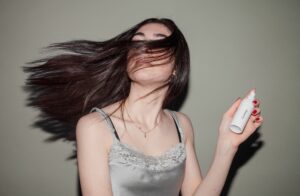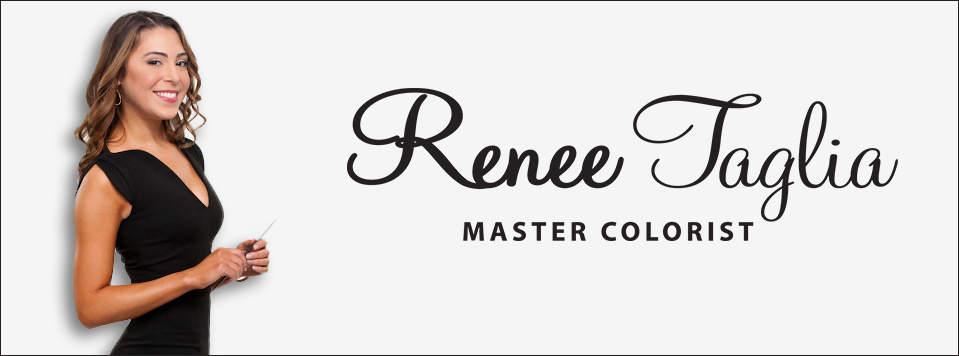3 Hair Products To Avoid In Quarantine (And Beyond)

With the uncertain times we’re living in, the world looks a lot different. Coffee and cocktails have turned into virtual cheers. Loungewear is the new business casual. Parents are now professors. That month long trip where you planned to do nothing but eat pasta has been delayed – indefinitely. As we are figuring out our new normal, many of us have had to discover our inner hairstylist. That has left us experimenting with recipes, hair tools, folklore, and long-lost products that have been living under our sinks. Relying on hair maintenance with what you have can be challenging. That’s why (we’ve) come up with the 3 products you need to stay away from whether you’re doing Zoomba, Zoom meetings or zooming to the grocery store.
DRY SHAMPOO
We get it, many people are basically running on coffee and dry shampoo. As tempting as it may be, chances are you are doing more damage than good. This product doesn’t actually “clean” your hair, dry shampoo robs your scalp of its natural oils and disrupts your hair and scalp’s ability to protect itself. Dry shampoo should be reserved for those rare moments when you are in a pinch like when you’re traveling or unable to get to running water. Imagine washing a face full of makeup, full of environmental impurities with only mattifying powder. That’s what powder and spray shampoos are like for your hair follicle. For maximum shine and health of your hair and scalp use this talc-based product as sparingly as possible. It may leave your hair looking more full and voluminous, but it voids your hair of its natural oils, rendering it vulnerable to breakage. Overusing dry shampoo can also cause dry flaky scalp and in some cases, dandruff. What’s even worse, the talc found in dry shampoo has been linked to cancer. Johnson & Johnson recently stopped selling baby powder because of its toxicity.
How can you use that oil instead of voiding it from the hair? I recommend using a natural boar brush. These magical tools feature natural bristles that won’t tear, split or fracture your hair. A natural boar brush gently massages your scalp, loosening up the oils at the roots and distributes them down your mid-shaft and ends. So, it’s time to brush aside your dry shampoo. Later this month, I will be giving my recommendations for what brush works best for your hair type (stay tuned).
HAIRSPRAY
Hairspray is a product that most people use with little thought as to what it does while it sits on your hair all day. Prior to the innovation of leave-in styling products, hairspray was one of those everyday essentials used to achieve hold. Hairspray contains polyvinylpyrrolidone (PVP), vegetable gums and gum arabic, while alcohol and hydrocarbons make up the solvent portion. Other ingredients such as propylene glycol, isobutane, propane and fragrance, may also be present. Alcohol and polymerscan can cause some serious dehydration. Ethanol is one of the most common alcohols in hairspray and not only dries out your hair, it irritates your scalp (and no one wants that). Too much coating on your hair causes it to look dull and lose its shine. Most importantly, in those extra rare occasions when hairspray is unavoidable, never use a comb or heat tools when there’s hairspray present. Your hair becomes incredibly fragile and using heat or a comb can damage it.
So, what should you be using on those extra humid days when the hair frizzies are out of control or your style needs some extra hold? Your natural hair texture will determine your options. Extra humid weather is perfect for beach wave days. Don’t use any heat tools and simply use a salt spray for extra definition or a leave-in protein cream for slight control. The key is to wash your hair the night before and apply your spray or leave-in styling product before you go to sleep. Then, reapply in the morning to refresh the look.
For days when you need hold, opt for a lightweight styling gel. Even if the gel contains alcohol, the levels are much lower than those found in hairsprays. Apply your light holding gel before your blow dry. Some are heat activated and will hold the shape you create with a round brush and dryer. Luckily today’s hair trends are generally softer with less need for strong holding hairstyles. Final tip, just because you find an “alcohol free” hairspray it does not mean it is not damaging to your hair. It’s actually more likely than not, the alcohol was replaced with an even more damaging substitute solvent for hold. Stick with light gels or beach salt sprays as a less dehydrating option.
HAIR SERUMS
Serums are often used to reduce frizz while adding shine and moisture. However, while we quarantine, this is a product you won’t want to use. Silicones are synthetic polymers that have hydrophobic properties, which creates an impenetrable seal. They create ‘slip’ in the hair, and feel silky smooth to the touch. But, not all silicones are built the same – They are either water soluble or insoluble silicones.
Non-Soluble Silicones
These types of silicones stick to the hair surface creating a plastic-like film, preventing strands to absorb water, air and nutrients. The negative effects of non-soluble silicones is that you cannot remove or penetrate them with water, which can inadvertently damage the hair. Making your hair waterproof dries it out over time and it’s crucial that the cuticle gets the water it needs to be healthy. Non-soluble silicones are typically found in hair products include: Dimethicone, Cyclomethicone, Amodimethicone, Phenyl Trimethicone, Cetearyl Methicone, Dimethiconol, Stearyl Dimethicone, as well as ingredients ending with “-cone” including Amodimethicone (non-soluble when Trideceth-12 and Cetrimonium Chloride are absent). Needless to say, these are the types of silicones you’ll want to stay away from.
Water-Soluble Silicon
If you are opting to use a serum, be sure to find one that is water-soluble. As the name implies, this type of silicone is able to dissolve in water and doesn’t leave a heavy build-up. It can easily be removed with water and a mild shampoo (which you should do more regularly if you are using this type of silicone). Use before heat tools and utilize a monthly hair detox if it’s used more often. Examples of water-soluble silicones are: Dimethicone Copolyol, Lauryl Methicone Copolyol, as well as any silicone with Peg- as a prefix.
I’m focused more than ever on helping people care for themselves at home. Being in quarantine is the best time to train your hair and stray away from corrosive products. Although times may be a little tough, we’re always looking on the bright side. I’m “hair” for every minute of it (just be sure these 3 products aren’t invited to the zoom dance party).
